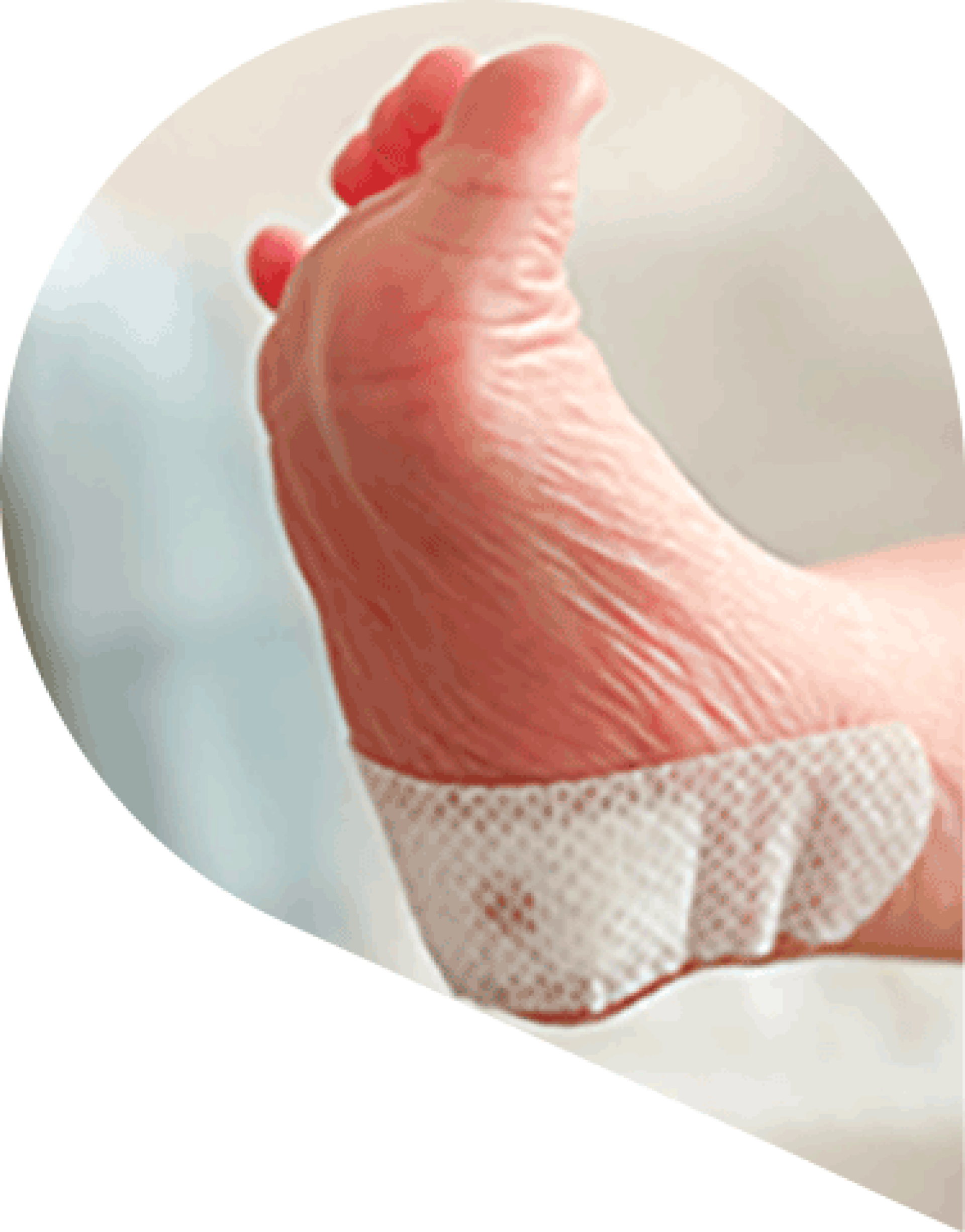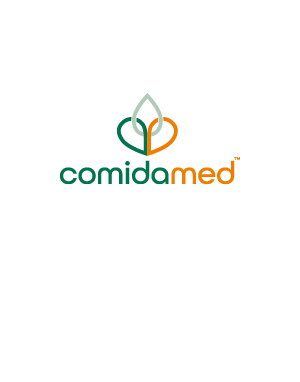Urea Cycle Disorders (UCD)
The following information provides a general overview of Urea Cycle Disorders and is intended for educational purposes only. It should not replace guidance from qualified healthcare professionals. Vitaflo™ International Limited accepts no responsibility for any loss resulting from reliance on the content. For comprehensive and up-to-date recommendations, please refer to national and international clinical guidelines.
What is the function of ‘The Urea Cycle’
The urea cycle is a series of biochemical reactions found primarily in the liver.
It has two main functions in the body:
This happens via numerous biochemical processes, converting the nitrogen compounds to non-toxic urea. Waste nitrogen is produced when amino acids are broken down (protein catabolism). One of these waste nitrogen compounds is ammonia, which is toxic to the body, so it’s rapidly converted into urea and then excreted by the kidneys.
The cycle is part of the biosynthesis pathway for arginine, which is the precursor for metabolites such as nitric oxide, creatine and glutamate.
What are Urea Cycle Disorders (UCDs)?
Urea Cycle Disorders (UCDs) are a group of autosomal recessive inherited disorders of protein metabolism that affect the detoxification of ammonia2. The exception is ornithine transcarbamylase deficiency (OTC), the most common UCD, which is an X-linked disorder3.
To summarise, women can only be carriers of OTC, whereas any males who receive the defective gene will develop the disorder.
How are Urea Cycle Disorders diagnosed?

Newborn screening (NBS) for Urea Cycle Disorders (UCDs) is challenging due to uncertainty about which markers to use and concerns about their specificity3.
NBS is limited to some states in the USA and Denmark in Europe2,4, screening for arginase deficiency rather than all UCDs. Often, neonates are symptomatic before NBS results are available; therefore, clinical expertise is key to ruling out other diagnoses.
How common are Urea Cycle Disorders?
The exact worldwide prevalence of Urea Cycle Disorders (UCDs) is unknown and difficult to measure due to the lack of newborn screening in most countries.
The estimated global incidence is approximately 1 in 35,000 – 69,0002.
However, data from the USA has estimated UCD incidence to be at least 1:35,000 births2, and partial defects may make the number much higher.
What are the symptoms of Urea Cycle Disorders?
Urea cycle disorders (UCDs) display a wide spectrum of symptoms.
The exact symptoms an individual presents with will depend on which UCD they have and the degree of residual enzyme activity2.
The most severe cases can become obvious in the early hours of life in infants with a UCD.
Milder forms may not present until several weeks, months or years later.
If excess nitrogen cannot be removed from the body due to a UCD, ammonia builds up to toxic levels. Prompt action is required to prevent severe disability and death.
The three key clinical manifestations of UCDs are:
critically high ammonia levels in the blood
disturbance of brain function
carbon dioxide levels in the blood drop, increasing blood pH above normal range
Hyperammonaemia is a non-specific marker of inadequate nitrogen detoxification present in most UCDs.
Early onset symptoms²
Some of the early onset symptoms (as hyperammonaemia develops) may include:
- Drowsiness
- Rapid breathing (respiratory distress)
- Irritability
- Vomiting and loss of appetite
- Lethargy
Without appropriate management, infants or later onset can rapidly present with:
- Confusion
- Headaches
- Disorientation
- Abnormal behaviour
- Ataxia (involuntary muscle coordination)
- Seizures
- Deep coma
- Acute encephalopathy
- In some cases, death
Prognosis and outcome are linked to peak plasma ammonia levels and the duration of hyperammonaemia. Even with an early/rapid diagnosis, brain damage may still occur2. Morbidity and mortality are high in these cases.
Common issues are as follows2:
- Neurodevelopmental difficulties (can range from mild to profound cognitive deficits)
- Hepatic complications
- Hypertension
- Gastrointestinal problems
- Renal problems
Individuals with argininosuccinate lyase deficiency have the poorest cognitive outcomes5.
Typical presentation of each of the UCDs is summarised below:
| Disorder | Typical Presentation |
|---|---|
| Carbamoyl phosphate synthetase 1 deficiency (CPS1) |
The most severe form with rapid onset of neonatal hyperammonaemia. |
| Ornithine transcarbamylase deficiency (OTC) |
Males: severe form, as with CPS1. Females: approx. 15% of carriers are at risk of hyperammonaemia. |
| Argininosuccinate synthetase deficiency/citrullinemia type I (ASS) |
May be just as severe, or less severe; some conversion of nitrogen to urea is possible. |
| Argininosuccinate lyase deficiency (ASL) |
Rapid onset of neonatal hyperammonaemia; liver damage risk and developmental disability are common. |
| Arginase 1 deficiency (ARG1) |
Rarely present in neonatal, the first onset is usually at 2 to 4 years of age. Symptoms include progressive movement disorder, developmental delay, seizures and poor growth. |
| N-acetyl glutamate synthetase deficiency (NAGS) |
Symptoms mimic those of CPS1 patients. |
How are Urea Cycle Disorders managed?
The management of Urea Cycle Disorders (UCDs) is dependent on many factors, including:
- Which disorder is present
- How severe the individual’s case of the disorder is (each individual disorder displays a spectrum of severity)
- Whether the patient is acutely unwell (acute management/emergency regimen) or clinically stable (routine management).
For this overview, the general principles of acute and routine management phases of UCDs will be outlined and do not constitute medical advice as stated in the disclaimer above.
Acute management/emergency regimens
The key characteristic of acute illness in Urea Cycle Disorders (UCDs) is hyperammonaemia, which is neurotoxic.
Such episodes may be seen shortly after birth and can also be triggered by illness, injury, excessive protein intake or prolonged fasting.
Prompt medical intervention is required as acute illness in UCDs is life-threatening, with longer episodes of hyperammonaemia and higher peak ammonia levels both negatively associated with outcomes.
Key steps in acute management include2:
- Stop or significantly reduce all protein intake immediately: This should be for a maximum of 48 hours.
- Ensure an adequate energy intake.
- Use of medications: Such as ‘nitrogen scavengers’ which bind with specific amino acids, thereby reducing ammonia flux through the urea cycle.
- Haemofiltration: extracorporeal circulation to facilitate rapid removal of toxic ammonia/waste products from the blood.
Due to the seriousness of acute illness in urea cycle disorders, patients often require admission to an intensive care unit.
Routine management of Urea Cycle Disorders
When not acutely unwell, routine management is usually a combination of two components
- Dietary management
- Medical management
Dietary management aims to prevent ammonia from building to toxic levels by reducing the nitrogen load entering the urea cycle. Therefore, this diet also supports normal growth (if appropriate), metabolic stability and improves outcomes.
This is achieved through a combination of:
Dietary management - Low protein diet
Reduction in natural protein intake: limits the generation of waste nitrogen. Dietary protein is typically limited to the WHO’s safe levels of intake for age2.
More protein can be added to the diet if it is tolerated/required. Assessing the adequacy of protein intake is imperative as excessive protein restriction can lead to catabolism and hyperammonaemia6.
Amino acid supplementation: use of essential amino acids may be required to meet protein requirements without increasing the burden on the urea cycle. Some Urea cycle disorders (UCDs) may require supplementation with arginine or, less commonly, citrulline. The use and extent of essential amino acid supplementation vary depending on factors such as:
- Local practice
- Which UCD the patient has
- The severity of the disorder
Fasting avoidance: this will help to prevent catabolism.
Emergency regimens: during periods of illness, emergency regimes are put in place to avoid catabolism.
An emergency or ‘sick day’ regimen (ER) is used to help prevent metabolic decompensation and can be effective in reducing episodes and hospital admissions7. The ER typically comprises of a high energy intake in combination with an increased amount of nitrogen-scavenging medications7.
Regimens are tailored to the individual and supported by the metabolic team.
Medical management
Nitrogen-scavenging medications: such as sodium benzoate, carbamylglutamate, help eliminate waste nitrogen from the body.
Can liver transplants be used for Urea Cycle Disorder management?
In some cases, yes. The urea cycle is contained within the liver, and liver transplantation has been used as a longer-term management option for some individuals with certain Urea cycle disorders (UCDs)5.
However, organ transplantation comes with medical burdens (e.g. life-long use of anti-rejection medication) and risks (e.g. rejection of the transplanted liver), but its use is on the increase.
Liver transplantation has been reported in all UCDs except NAGS (N-acetyl glutamate synthetase deficiency)2. It is considered curative and allows termination of the low protein diet.
Liver transplantation is indicated for those suffering recurrent metabolic decompensation and hospitalisation despite medical therapy, as well as those with poor quality of life. Early timing of a liver transplant is essential as it does not reverse pre-existing neurological damage2.
Transplantation performed before 1 year of age may yield better outcomes than later in life2.
What does the dietary management of Urea Cycle Disorders in infants involve?
Infants with Urea cycle disorders (UCDs) can present acutely with hyperammonaemia and are generally very unwell. Therefore, immediate and appropriate treatment is essential2.
If the infant survives this initial episode, routine clinical management can begin.
This will involve a reduced intake of human milk or standard infant formula alongside an essential amino-acid (EAA) enriched formula (such as comida-UrC A formula) or a protein free formula. Breastfeeding offers many benefits to mothers and infants, and a family should be supported in making the appropriate choice for their family, if deemed appropriate by the metabolic healthcare team.
The use of EAA-enriched formula, such as comida-UrC A formula, may be beneficial. By limiting the intake of non‐EAA, waste nitrogen may be diverted to the synthesis of non-EAA. This may help reduce the build-up of ammonia as less waste nitrogen is being generated.
Beyond early infancy, dietary management of UCDs involves support from the local metabolic team.
The UCD diet is designed to prevent ammonia from building to toxic levels by reducing the nitrogen load entering the urea cycle. Therefore, this diet also supports normal growth (if appropriate), metabolic stability and improving outcomes.
Related products
Browse the products available for managing this condition.
Information presented on this page is intended for healthcare professional use only. Food for Special Medical Purposes to be used under medical supervision.
Date of publication: 22/05/2025
- Matsumoto S, Häberle J, Kido J, Mitsubuchi H, Endo F, Nakamura K. Urea cycle disorders—update. J Hum Genet. 2019;64:833–47. https://doi.org/10.1038/s10038-019-0614-4
- Häberle J, Burlina A, Chakrapani A, Dixon M, Karall D, Lindner M, et al. Suggested guidelines for the diagnosis and management of urea cycle disorders: First revision. J Inherit Metab Dis. 2019;42:1192–230. https://doi.org/10.1002/jimd.12100
- Ah Mew N, Simpson KL, Gropman AL, Lanpher BC, Chapman KA, Summar ML. Urea cycle disorders overview. 2003 Apr 29 [updated 2017 Jun 22]. In: Adam MP, Feldman J, Mirzaa GM, et al., editors. GeneReviews® [Internet]. Seattle (WA): University of Washington, Seattle; 1993–2025. Available from: https://www.ncbi.nlm.nih.gov/books/NBK1217/
- Sikonja J, Groselj U, Scarpa M, Marca GL, Cheillan D, Kölker S, et al. Towards achieving equity and innovation in newborn screening across Europe. Int J Neonatal Screen. 2022;8:31. https://doi.org/10.3390/ijns8020031
- Siri B, Greco B, Martinelli D, Cairoli S, Guarnera A, Longo D, et al. Positive clinical, neuropsychological, and metabolic impact of liver transplantation in patients with argininosuccinate lyase deficiency. J Inherit Metab Dis. 2025;48: [Epub ahead of print]. https://doi.org/10.1002/jimd.12843
- Posset R, Garbade SF, Gleich F, Gropman AL, de Lonlay P, Hoffmann GF, et al. Long-term effects of medical management on growth and weight in individuals with urea cycle disorders. Sci Rep. 2020;10:11788. https://doi.org/10.1038/s41598-020-67496-3
- Dixon M. Emergency regimens for inherited metabolic disorders. In: Shaw V, editor. Clinical paediatric dietetics. 5th ed. Hoboken (NJ): Wiley-Blackwell; 2020. p. 673–80. https://doi.org/10.1002/9781119467205.ch31


